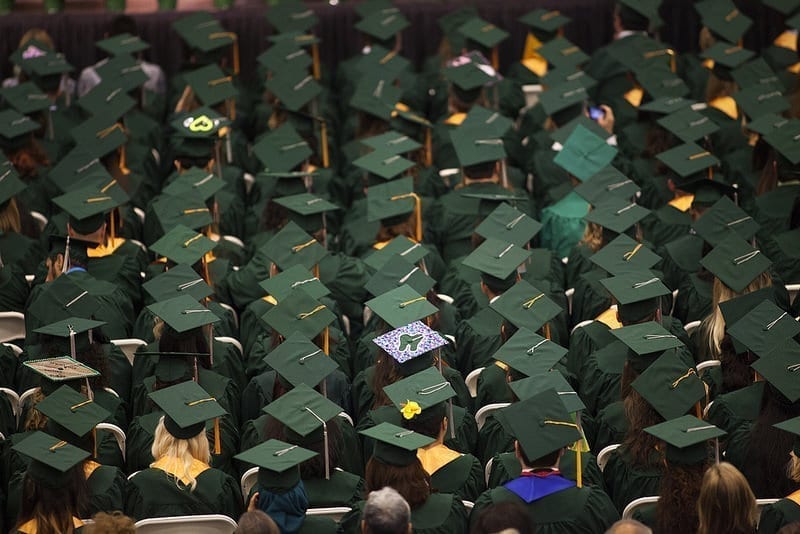A college degree is more necessary yet less valuable than it used to be, tuition is through the roof, and apprenticeships are growing. Who wins, who loses?
Back in the 1970s and 80s, the common wisdom was that a college degree was the ticket to the good life. If you wanted a high-paying job and a ticket into the middle class, you avoided being a working stiff and went straight to management or a professional career by going to college. Now that this social experiment has been playing out for a generation or two, where has it gotten us? Can we use what we’ve learned to go in a better direction?
The push to send everyone to college has resulted in its share of drawbacks. For one, growth in the number of people holding a college degree raises the bar for all job seekers. When the number of applicants for a given job swells to the point where they must be filtered prior to the interview, one of the easiest ways to sort through the slush pile is to exclude anyone who doesn’t hold a degree. This makes sense in fields where post-secondary education is critical for competent job performance. However, when a four year degree has become mere shorthand for knowing how to show up on time and play the game, something important has been lost. It’s also a driver of greater inequality when equally skilled and competent people who couldn’t afford a degree can’t find living-wage jobs.
And make no mistake, college is well on the way to becoming the new high school. Although a college degree has long served as a proxy for purposes of judging competence and intelligence, there’s good reason to question that assumption. In order to grant degrees to ever more students (i.e., satisfy their paying customers), colleges are caving under pressure to graduate those who perhaps don’t deserve the title. Many incoming freshmen have not been adequately prepared by their (perhaps deliberately) budget-strained high schools to tackle college, so they must take remedial courses in subjects like English and algebra first. At colleges like Cal State and CUNY, there’s a push to grant college credit for those remedial, high school level classes in order to graduate more students faster. This might look like success on paper, but watered-down degrees can no longer be counted on to signify much of anything.
As social and economic pressures force more (and more marginal) students into college, supply and demand increases the price tag for tuition. Even if a student is lucky enough to score financial aid or scholarships, the remaining seats become more pricy for those who didn’t. Soaring student loan debt is a huge problem, both for our country and our graduates. Twenty states currently suspend professional or drivers’ licenses for those who fall behind in paying their student loans. The threat of losing a career or transportation to work is supposed to light a fire that prioritizes repayment, but in reality, it often means that graduates can no longer work in their field and our hospitals, schools, and other institutions lose their staff. People who can’t work can’t pay debts. This serves nobody.
So, what can we do? For years, companies have counted on externalizing the cost of training to those who pursued it on their own in order to make themselves more attractive to employers. As students are priced out of college and the government considers stiffing the middle class (and grad students) to give tax cuts to corporations, that strategy is faltering. Perhaps these corporations can once again shoulder the cost of training their workers. That’s exactly what’s going on near Denver, Colorado, where a homebuilder, unable to find trained workers, decided to school them himself. Around the country, vocational education and apprenticeships are making a comeback among students for whom a college degree is a less attractive option, or not an option at all.

Any change creates winners and losers, and that is true of this trend as well. More students choosing technical and vocational programs means fewer academics. This could make a college degree more valuable again, while eventually depressing the wages of the students who opted for vocational training. Those who make it into the workforce without studying softer subjects, like the humanities, may never circle back and give them a look, missing out on the personal growth and well-rounded education that college is supposed to provide. Training as factory workers just as we’re poised to hand those jobs off to robots may not be a good long term employment strategy. There are political ramifications to the kind of education people pursue. Finally, let’s not forget that increasing manufacturing while providing more people with middle class lifestyles drives consumption, which creates pollution and exacerbates climate change. In a time where we’re running out of good, healthy choices for society, let’s hope we pick the least bad options ahead of us.
Related: Education in an Age of Neo Know-Nothings


Join the conversation!